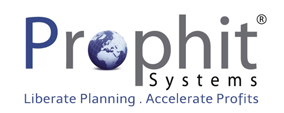Demand forecasting: Predicting customer demand accurately to optimize production and inventory levels.
Q: What is demand forecasting?
A: Demand forecasting is the process of estimating future customer demand for a product or service. It involves analyzing historical data, market trends, customer behaviour, and other relevant factors to predict future demand patterns. Recent advancements in AI and ML have found good application in demand forecasting.
Q: Why is demand forecasting important?
A: Demand forecasting is like raising your line of sight whilst driving – being able to see what’s coming gives you time to navigate problems and pitfalls. Specifically, businesses can use this foresight to ensure that adequate stock is available to meet customer demand while minimizing excess inventory or stockouts. Accurate demand forecasting enables efficient resource allocation and cost-effective operations.
Q: What methods can be used for demand forecasting?
A: Various methods can be used, such as statistical models (e.g., time series analysis, regression analysis, machine learning.) Qualitative methods (e.g., expert opinions, market research), and a combination of both (hybrid forecasting). The choice of method depends on the nature of the product, available data, and forecasting goals. For many businesses there’s deeper value in developing a consensus forecast which has the added benefit of unifying the management team and giving them one set of numbers to align to.
Q: How often should demand forecasting be done?
A: The frequency of demand forecasting depends on the product’s characteristics, demand volatility, and lead times. It can range from daily or weekly for fast-moving consumer goods to monthly or quarterly for durable goods or long-lead-time products. For most manufacturers a weekly 13 week forecast review is recommended, and monthly updates forecasting out 2 years typically serves most business functions well.
Q: What challenges are involved in demand forecasting?
A: Demand forecasting can be challenging due to factors such as seasonality, market dynamics, changing customer preferences, external events, product supersession, promotions, and out of stock events clouding history. Limited data availability, inaccurate data, and unexpected disruptions can also impact forecasting accuracy. Being able to combine market intelligence with qualitative data is difficult and cumbersome unless you have the right tools and the right processes.
Demand Forecasting Checklist:
- Confirm what the goals of forecasting are – what problems are we solving? Where and how will the forecast be used? Is it for Supply planning, Capacity Planning, Financial Planning or a combination of them?
- Choose at what granularity you will be forecasting at. Is it weekly or monthly buckets?
- Collaborate with stakeholders: Involve key stakeholders, including customers. Incorporate sales, marketing, and production teams in the demand forecasting process. Incorporate their insights and feedback to improve forecasting accuracy.
- Collect historical data: Gather relevant data on past sales, customer orders, market trends, product variants and supersessions.
- Clean and preprocess data: Ensure data quality by removing outliers, correcting errors, and filling in missing values. Transform the data into a suitable format for analysis.
- Select appropriate forecasting method: What is the most suitable forecasting method based on data characteristics, such as history, time series analysis, regression models, or qualitative methods.
- Split data for validation: Divide the historical data into training and validation sets. Use the training set to build and calibrate the forecasting model and validate its accuracy using the validation set.
- Apply forecasting model: Implement the selected forecasting method on the training data to generate future demand predictions. Consider incorporating other variables like promotions, marketing campaigns, or economic indicators.
- Evaluate forecasting accuracy: Compare the forecasted demand with actual demand to assess the accuracy of the model. Use statistical metrics such as Mean Absolute Error (MAE), Mean Squared Error (MSE), or forecast bias.
- Refine and update the model: Continuously monitor and evaluate the forecasting performance. Refine the model as needed based on changes in market conditions, product lifecycle, or other relevant factors.
- Adjust production and inventory levels: Use the demand forecasts to optimize production schedules and inventory levels. Ensure that the right amount of stock is available to meet customer demand while minimizing excess inventory costs and stockouts.
- Monitor and update forecasts: Regularly review and update the demand forecasts based on changing market conditions, customer preferences, or any other relevant factors. Maintain a feedback loop to continuously improve the forecasting process.
Best practice is to use consensus forecasting, to use the continuous improvement rhythm to help ensure sustainability via periodic demand reviews.
For any further information, don’t hesitate to reach out and call us at 02 8666 9060.

